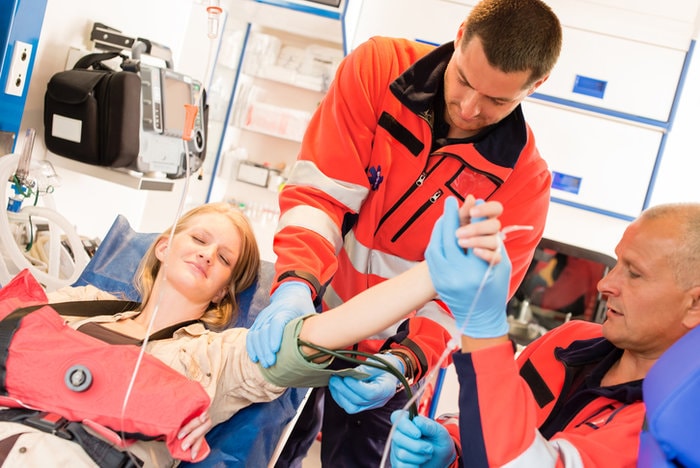
When you think back to what EMS equipment used to be like, you can appreciate the vast changes that have taken place. Oxygen bottles were larger, heavier, and a burden to drag on scene. Monitors were clunky and not nearly as sophisticated. And stretchers required back-breaking labor to lift and haul.
Emergency medical services have come a long way in the decades since paramedics first emerged on the landscape. And over the years, new medications, smaller computers, and technological advances in materials and hardware have provided greater portability over a wide range of medical equipment.
But one of the most important pieces of portable equipment that you may not give much thought to is your portable suction unit.
Advances in Portable Suction Units
Portable suction units have also come a long way since they were first utilized in EMS. Like cardiac monitors, they used to be larger, heavier, and less sophisticated than today's modern units. So let's explore some of today’s modern features that make suction units the portable device every paramedic needs.
The Importance of Pressure
Portable suction is all about pressure. Without negative pressure, the machine is unable to create the vacuum necessary to remove bodily fluids from the patient's nose and mouth. Not only should your unit provide effective pressure, it is also a plus if the machine has a dial to adjust the pressure. Here are a few cases when dialing back the pressure may be necessary:
- Pediatrics—Children not only have smaller oral and nasal passages, their tissues are also more delicate. Adjust the pressure down to prevent trauma to these passages and to avoid hypoxia. Beware of prolonged suctioning (>5 seconds), since a child will become hypoxic quicker than a larger adult.
- Geriatrics—Like children, geriatrics also have nasal and oral tissues that are prone to damage and bleeding. Use care when suctioning the elderly, and be aware of dental hardware that may become dislodged, especially during over-aggressive suctioning. Dislodged hardware can easily become an obstruction, and careless suctioning can push the object down into the trachea.
- Trauma Patients—It may be necessary to dial back the pressure when dealing with extensive oral trauma. If there are loose teeth or damaged tissue, you may cause further injury to gums and exposed wounds.
Portability
One of the most useful features of a suction unit is its portability. You can take it anywhere, and since emergencies can occur in the most inopportune locations, your suction unit must be ready for travel. With improvements in technology, the sophisticated hardware that drives today’s suction units is smaller, more lightweight, and more effective than units of old. Suction units are now small enough to fit easily in a trauma or airway bag, and they are ideal for tactical medical scenarios. The smaller the unit, the greater the ease of carry, so choose a unit that meets your particular needs.
Power
Another tremendous advance in today’s suction units is the range of power options. Most run on rechargeable batteries, ideal for EMS. When the battery runs low, you simply replace it. But rechargeable batteries are not always the ideal option. There are situations where alkaline batteries or alternative power sources may come in handy, such as MCIs. In multi-casualty incidents, when suction units may be utilized over long periods, a rechargeable battery may not be the best option—especially if the MCI is due to a natural disaster and electricity is scarce. Plan carefully for such scenarios and consider alkaline-reliant units for your MCI trailer.
Parts
One of the greatest advantages of today’s portable suction units is the range of catheters that are now available. The days of only one option are long behind us. Sure, the standard rigid, small-tipped catheter still has its applications, but what if your patient has a difficult airway, and the standard catheter can’t reach the cords? Now, there are specialized catheters for just such scenarios. Catheters with a hyper-curved design provide greater reach in those difficult patients. They also offer larger internal diameters, which provide more expedient evacuation of fluids.
Portable devices are fundamental to emergency field medicine, and they enable paramedics to treat a broad range of patients, no matter where the emergency occurs. And one of the most important portable devices is the portable suction unit.














